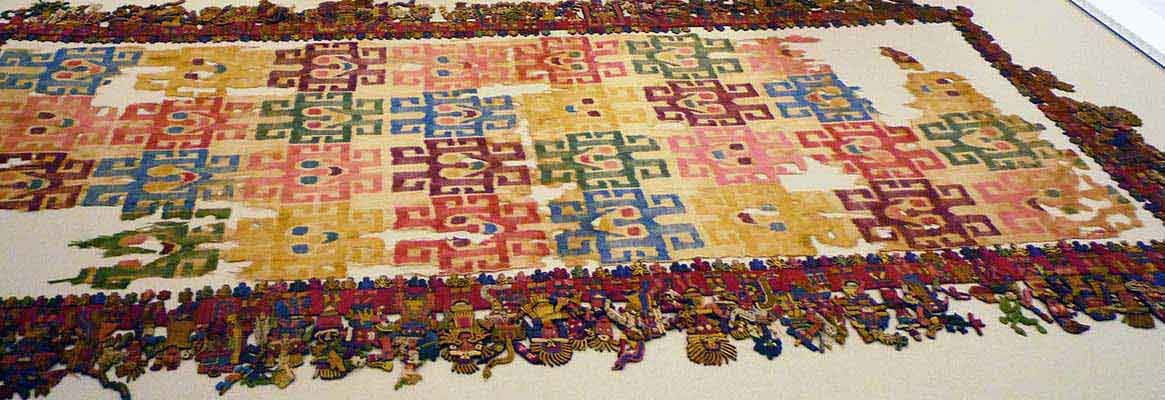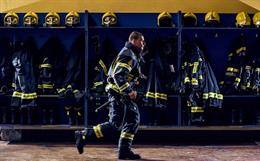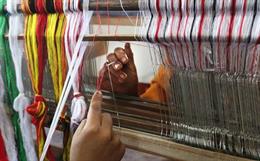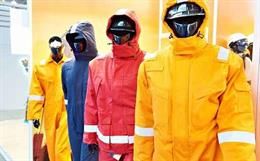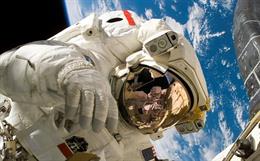Technical textiles are one of the fastest growing sectors ofthe global textile industry. According to 'Technical Textiles and IndustrialNonwovens: World Market Forecast to 2010' published by David Rigby Associatesit is forecast that the world market for technical textiles and industrialnonwovens will reach 23.8 mn tons with a value of $ 126 bn by 2010. The driversfor future growth of this industry are expected to be Asian countries like China and India.
The Indian technical textile industry was estimated by TataEconomic Consultancy Services (TECS) to be about Rs 23,300 crore during 2005-06which is expected to increase to Rs 29,600 crore ($ 7.5 billion) by 2007-08registering a growth of 11.51 % per annum, while the total textile production may touch over $ 45 billion.
| Various techniques of application are required for finishing of medical textiles with specific finish that may include: coating, spraying, padding etc. |
The Working Group for the 11th Five Year Plan has projected the market size of technical textiles to grow at about 15% per annumand at this growth rate, the market size for technical textiles will increasefrom Rs 26,076 crore ($ 6.5 billion) in 2006-07 to Rs 52,200 crore ($ 13billion) by 2011-12. Keeping such high growth rate of the Technical Textilesmarket in view the Prime Minister Dr Manmohan Singh in his Valedictory Addressannounced, during the Tex-Summit 2007 organised by the Ministry of Textiles on31st August and 1st September 2007, about the launchingof Rs 689 crore Technology Mission on Technical Textiles in the 11thFive Year Plan.
An objective of the Mission will be to focus on key segmentsviz Agrotech, Meditech, Buildtech and Geotech. These sectors are expected togrow at a rate of 8%, 12%, 15%, and 15%, respectively. The Meditech will focuson sanitary napkins, incontinence diapers, baby diapers, surgical dressings,healthcare textiles, sutures, medical devices and implants. The market size forthese products will grow from Rs 1280.32 crores to around Rs 2256.36 croreduring 2006-07 to 2011-12.
Textiles used for medical, healthcare and hygiene areclassified as Medical textiles or Meditech. Some areas of usage are:
- Non-implantable materials - For wound care that includes absorbent pad and bandages
- Textiles in Extracorporeal devices - Like artificial kidney, liver and lungs.
- Implantable materials - Like sutures (biodegradable and non-biodegradable), soft tissue implants, artificial tendon (meshes)" artificial ligament, artificial cartilage, orthopaedic implants, artificial joint, cardiovascular implants, vascular grafts, heart valves.
- Healthcare/hygiene products - Include bedding, clothing, surgical clothes, products for feminine hygiene like sanitary napkins, baby and adult diapers etc.
Finishing
Most of the medical textiles are prefabricated ready-to-use products. They are made from various bio-compatible skin-friendly fibres withsome inherent properties and added functionalities. The added functionalitiesmay be imparted during the production of the fibres or applied as a specialtyfinish to the fibre, yarn, fabric or the product itself.
Various techniques of application are required for finishingof medical textiles with specific finish that may include: coating, spraying, padding etc. Such finishes must be applied in infection-free environment or thefinished product may be required to be sterilised before use. The finish to beapplied may have an auxiliary function or may be an integral part of the whole product. Standard products for coating on the field of medical application are self adhesiveplaster, wound dressing and compresses, plaster and bandage materials, collagenand siliconised tissues, and operation and post-operative textiles such asclothing and covers. The properties required may be hydrophobicity,hydrophilicity, alcohol repellency, water density, medicine release and nanoporosity.
The medical textiles may have 'Interactive materials', which can react to human and environmental conditions: phase-change materials (thermo-regulating systems), shape memory materials, change of colour in case of emergency, reaction by change of temperature, pH-value and electro active influences, microencapsulation of specific agents, transdermal systems - coating of textiles with active substances and medicals, production of layers from gel with encapsulation of additional substances.
In the following sections a brief description of some of the product and the requirement of the finish is discussed.
Non-implantable materials
Generally wound care products such as absorbent pads, bandages and plasters are classified as non-implantable medical textiles. Other textile products such as, protective gowns, gloves, operating-room drapes masks, shoe covers also form a part of non-implanted textile materials. However, they will be discussed under healthcare and hygiene products category.
Such materials are used for external application and they mayor may not come in contact with the skin. Wound dressings that generally are made from highly absorbent fibres or polymer coatings absorb blood and provide medication and are composite fabrics that are produced by coating an adhesive (in many cases pressure sensitive) between the fabric layers and may also be an absorbent polymer and a medication. These are auxiliary finishing compositions that become an integral part of the product.
The dressings come in a variety of styles and sizes for all parts of the body, enabling wounds from surgical procedures, and plaster casts, to be kept dry and prevent unnecessary dressing changes. This minimises damage to the wound, pain and the chance of cross infection, maximising how quickly the wound heals.
A number of wound care companies have launched different kind of wound care materials that have been classified into 10 different categories, namely
- low-adherence dressings
- gauze impregnated dressings,
- dextranomer paste pad and dressing
- alginate dressing
- hydrocolloid dressings
- hydrogels
- vapour permeable adhesive film dressings
- polyurethane foam dressings
- zinc paste bandages, and
- iodine containing dressing.
(Y Quin, 'Smart wound-care materials, in 'Smart textiles for
medicine and healthcare: Materials, systems and application', Ed. By L. Van
Langenhove, Woodhead Pulishing Limited, England, 2007, p 27-49).
Wound dressings generally consist of a layer of absorbent material, such as an absorbent gauze or foam layer, wherein the layer is supported on an adhesive coated semi-permeable backing sheet. An adhesive-coated margin of the backing sheet extends outwardly from the edges of the absorbent layer for attachment of the dressing over a wound by adhesion to the skin surrounding the wound. The absorbent layer serves to absorb wound exudates.
Such dressings require a coat of an adhesive layer that may
consists of acrylate ester copolymers, polyvinyl ethyl ether or polyurethane of
these adhesives polyurethane-based pressure sensitive adhesives are preferred. The basis weight of the adhesive layer is between 50 to 150 g/m2. The
adhesive layer should be moisture vapor transmitting and/or patterned to allow
passage of water vapour.
The zinc oxide based dressings consist of zinc oxide, glycerin, water, and a preservative. A number of other natural substances, such as gelatin, alginates, gum arabic, and agar agar, are also added as binders. The preservatives ore commonly esters of p-hydroxybenzoic acid or boric acid.
A composition which is particularly useful in semi-rigid medical supporting bandages comprises of 10 to 35% zinc oxide, 2 to 15% cellulose ether, 10 to 35% glycerin and 30 to 75% water. 160 g/m 2 of the above composition is applied, in a conventional coating plant equipped to process highly viscous materials, to a gauze bandage 10 cm wide and having 20 threads. The substrate has a selvedge on both sides and the resultant coated product is wound on a polystyrene core having 10 mm inside diameter and 14 mm outside diameter, wrapped in wax paper, and wrapped in polyethylene coated aluminum foil which is then fused.
Bandages of the foregoing description have been used for
many years in the treatment of leg injuries or disorders. They are used for
many years in the treatment of thrombosis, for the healing of leg ulcers, as a
supporting dressing in minor injuries, to prevent swelling of broken limbs
after removal of the plaster cast, and as semi-rigid compression dressings in
cases of varicosis, ulcers, phlebitis, and leg edema.
One of the most significant ideas to change the nature of wound dressing materials has been the concept of moist wound healing. Moist wound healing refers to the provision and maintenance of optimal hydration of the exposed tissues in the wound, that is, wound tissues should be physiologically moist, not dry but not wet. Moist wound healing dressings usually fall into 1 of these 3 performance categories with regard to their effects on tissue moisture levels - dressings that absorb excessive wound exudate, dressings that maintain existing levels of tissue moisture, and those that add moisture to the tissues. (Liza G Ovington, Advances in wound dressings, Clinics in Dermatology 2007: 25, 33-38).
Dressings that absorb excessive wound exudates have a high
capacity for capturing and holding fluid. In such dressings generally calcium
alginate (fibres or powder) and foams are used as spatiality chemicals. While
various types of hydrocolloids and transparent films are used in dressings that
maintain hydration of tissues. Hydrocolloids are gel forming polymers and
adhesives held in fine suspension on the backing of film or foam.
Lastly the dressings that provide moisture to the wound are
hydrogels of various polymers such as : glycerin polyacrylate polymer is a
chemical available under the tradename Hispagel. The glycerin polyacrylate has
excellent water solubility, moisture retention and lubrication properties. Additionally this polymer also has the non drying property due to strong bonding of
water with the polymer molecule. The glycerin polyacrylate will work on skin to
form a film protecting the wound from outside particles and in combination with
glycerin maintain a high hydration level (US Patent 5902600). Hydrogels
consist essentially of 20-97% of an aqueous liquid and a cross-linked
hydrophilic polymer. A variety of hydrophilic polymers have been used for the production of hydrogels viz CMC, alginates, HEMA, chitosan, pectin, petroleum jelly etc.
Recently some advanced wound dressings have been developed that interact with the biochemical environment in wound and promote healing. Such dressings are generally composed of a homogeneous mixture of 55% bovine collagen and 45% oxidised regenerated cellulose. When placed in the wound these collagen-based dressing chemically binds to enzymes and renders them inactive, bringing their active levels back down into the ranges found in healing wounds, which may then allow healing to progress.
The latest addition to the wound dressings are commonly classified as 'Antimicrobial Dressings'. An antimicrobial agent such as iodine, ionic silver, silver + charcoal and polyhexamethyl biguanide (PHMB) are incorporated into foams, hydrocolloids, alginates, and fibres. Most popular among these are the silver containing dressings where these products release silver cations into the wound as they absorb or come in contact with wound exudate.
A cursory look at the wound dressings indicates that a large number of specialty chemicals and finishes are required in their production and these may include, polyurethane, silicones, zinc oxide, glycerin, gelatin, alginates, gum arabic, agar agar, calcium alginate, hydrogels of CMC, alginates, HEMA, chitosan, pectin, petroleum jelly, glycerin polyacrylate, collagen, iodine, ionic silver, charcoal and polyhexamethyl biguanide (PHMB) etc. Coating is a preferred method of application.
Healthcare/hygiene products
Another area that requires a large amount of specially finished textile products is that of Healthcare and Hygiene products that Include bedding, clothing, surgical clothes, products for feminine hygiene like sanitary napkins, baby and adult diapers etc.
According to a report hospital-acquired infections in England cost the National Health Service in the region of 1 billion pounds (infections result in an average extension to a hospital stay of 11 days per patient) each year and at least 5,000 patients die of complications from infections that they contracted in hospitals. At any given time, 9% of hospitalised patients in the UK, that is, 300,000, have an infection that they did not have before they arrived. Many of these infections are caused due to unhygienic conditions prevalent in hospitals.
Bed sheets
Patients while in hospital constantly come in contact with
the bed sheets and pillows provided in the bed. Number of products and treatments have been developed and commercialised for producing fabrics for bed sheets
and pillow covers with antimicrobial, odour absorbing, temperature regulating,
blood repelling and anti-allergic properties that finding their way in
hospitals.
A number of manufacturers are producing antimicrobial sheets
and pillows that keep bedding cleaner and prevent foul odour. Both
bacteriostatic and bacteriocidal type of antimicrobial agents have been used
for treatment of bed sheet and pillow fabrics. For instance Rest Right Pillow
with SilPure treatment of American Textile Co is polyester fiberfill pillow
treated with SilPure, a nano-silver-based treatment that claims to prevent bacterial growth and bad smells. A cotton barrier keeps out dust mites, which doctors
say can be helpful in reducing allergy symptoms.
Another product incorporating metal compound as antimicrobial agent is the Cupron bed sheets. Cupron's manufacturing technology permanently binds its proprietary copper compound to textile fibres. Copper's antimicrobial properties have been known for more than five millennia. The ancient Egyptians used copper pipes to transport water to destroy parasites and other water-borne pathogens. Antimicrobial propensity of metals and metal salts has been attributed to their ability to deactivation of proteins.
N-Halamines, having oxidative properties, have been
incorporated in the bed linen by the Vanson HaloSource, Inc. The company's
HaloShield technology, introduced in 2004, harnesses N-halamine molecules that
attract chlorine molecules in the wash cycle and binds chlorine on the fabric. When
bacteria and viruses come into contact with chlorine in the fabric,
chlorine kills the microbes as shown in Fig 1.
Gang Sun, professor of textiles and clothing at the University of California, Davis and one of the developers of HaloShield technology has said
that. "In light of the rise of antibiotic-resistant bacteria, the use of
HaloShield can be a major development in the battle against microbes that spread infection." For the first time, hospitals, nursing homes and other healthcare
facilities will be able to use HaloShield sheets and pillowcases to combat the
spread of a wide range of resistant bacteria, viruses and other microbes,
including MRSA, a form of staph bacteria, which is blamed for about 13% of the
USA's two million hospital infections each year, according to the Centers for
Disease Control and Prevention. Overall, hospital infections kill 60,000 to
80,000 people a year at an average annual cost of $ 6 million per hospital.
Another product that has Nanocide Antimicrobial developed by CMI Enterprises has been introduced in the market in 2006. The products sold under the trade name 'Dimensions' have shown that 99.9% of resistant Staphylococcus germs that come in contact with it, are killed within 30 minutes. It is claimed that with the Nanocide Antimicrobial treated fabrics, hospitals, clinics, dental offices, and nursing homes can now provide an environment that is essentially risk free of contamination, and subsequent patient infection and other potential health related issues from seating and bedding upholstery material.
CMI permanently places or embeds the nanoparticles into the
surface area of the product. When the recommended cleaning and care
instructions are properly followed, the nanoparticles cannot be washed away,
worn off or depleted overtime.
With the use of these innovative nanoparticles, the
Nanotechnology employed is unique in the fact that the bacteria does not have
to ingest or absorb the biocide, but is killed when it comes into contact with
the Ion field on the surface. The new 'Dimensions' with Nanocide Antimicrobial
line is useful for the medical, clinical, elderly care, and EMT industries.
The new temperature regulating bed linen of Brennet AG, Bad
Sackingen of Germany produced from viscose rayon having phase change
microcapsules (PCMs) of Outlast technology absorbs excess body heat, stores it
inside patented microcapsules and releases it back to the sleeper when needed,
which helps the microclimate of the skin be influenced in a positive way. These
bed linens help balance temperature changes and offer a pleasant temperature
throughout nocturnal recovery.
A number of specialty chemicals being applied to textiles that come under the category of health promoting products such as Vitamin E - prevents aging, Capsaicin - raspberry extracts that prevent slimming and so on.
The technology of finishing of medical textiles is in its infantile stage. This glimpse of the finishes for medical textiles is indicative of the fact that in coming years these finishes will be used for variety of purposes and will have a major share in the specialty chemicals market.
About the Author:
M L Gulrajani is associated with Indian Institute ofTechnology (lIT), New Delhi.

